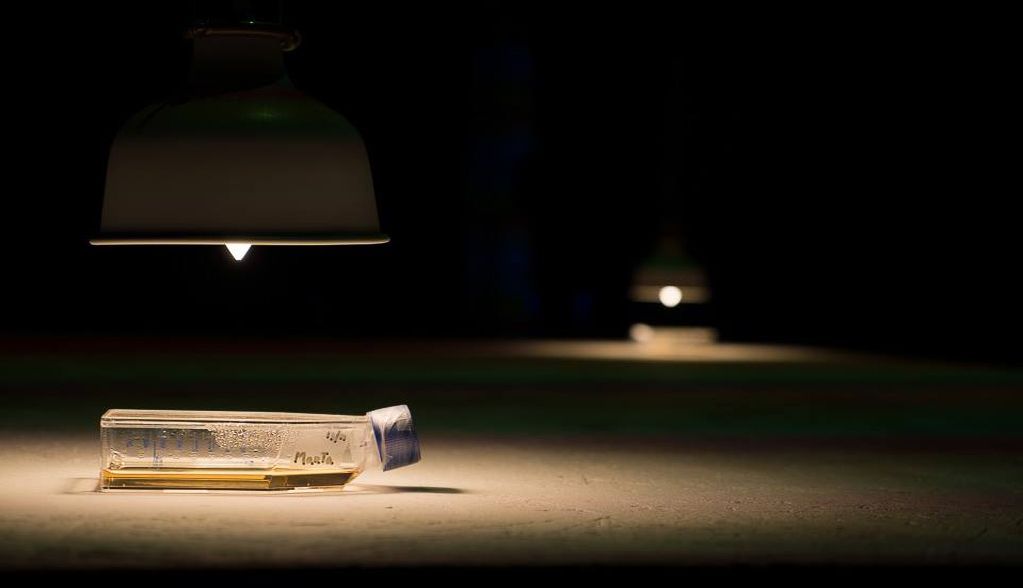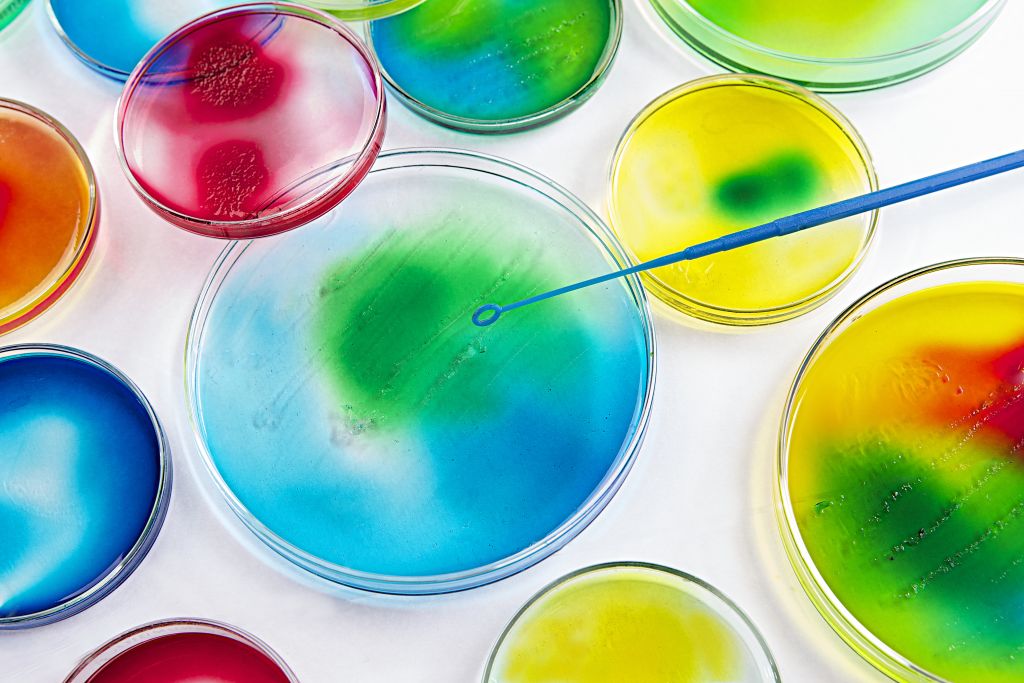Microbiology makes its mark at the first edition of the London Design Biennale taking place in Somerset House. Portugal’s exhibition by Marta de Menezes uses bacteria and viruses to create changing art that represents the future direction of the country.
 With the common topic “Design by Utopia“, 30 nations have interpreted utopic and dystopic futures using art to make us think about where we’re headed. Portuguese artist Marta de Menezes decided to use microbiology to represent the changing nature of her nation.
With the common topic “Design by Utopia“, 30 nations have interpreted utopic and dystopic futures using art to make us think about where we’re headed. Portuguese artist Marta de Menezes decided to use microbiology to represent the changing nature of her nation.
The artist used bacteria, viruses and plants to visualize real statistical data of the gender gap that currently exists in her country. But over the three weeks of exhibition, the bioart pieces have changed and grown to represent the progression towards an equalitarian utopia.
Portugal’s exhibition also counts with computer-generated 3D maps that offer the opposing dystopian future of a sexist society. By using natural elements in her pieces, Marta conveys an optimistic view of what could be achieved.
Marta is currently the artistic director of Ectopia, an art laboratory within the Gulbenkian Science Institute in Portugal, and director of Cultivamos cultura, a space for artist residencies and outreach. Her work aims to make people from all backgrounds reflect on the meaning of concepts like life, nature, science, art, identity and gender through experimental observation.
In her project Immortality for Two, exhibited in Slovenia last year, Marta and her husband introduced cancer genes in their own immune cells to make them immortal. The flasks containing their cells will have to be isolated (since otherwise the cells would reject each other), conveying the message that “immortality comes at a price“.

In her exhibition Decon, she recreated the famous paintings of Piet Mondrian using colored media that was degraded by bacteria over time. She created living pieces that were “destined to die and decompose, as all of us are“.

Her future work will explore genetic modification of rice and zebra fish to create living art. This is a new take on the intersection of science and art, using advanced laboratory techniques to explore our biology and the world around us.
If you liked her artwork, you still have a chance to see her exhibition at the London Design Biennale until the 27th of September!
Featured image: JPC-PROD/shutterstock.com
Figures 1 and 2 credit: martademenezes.com





